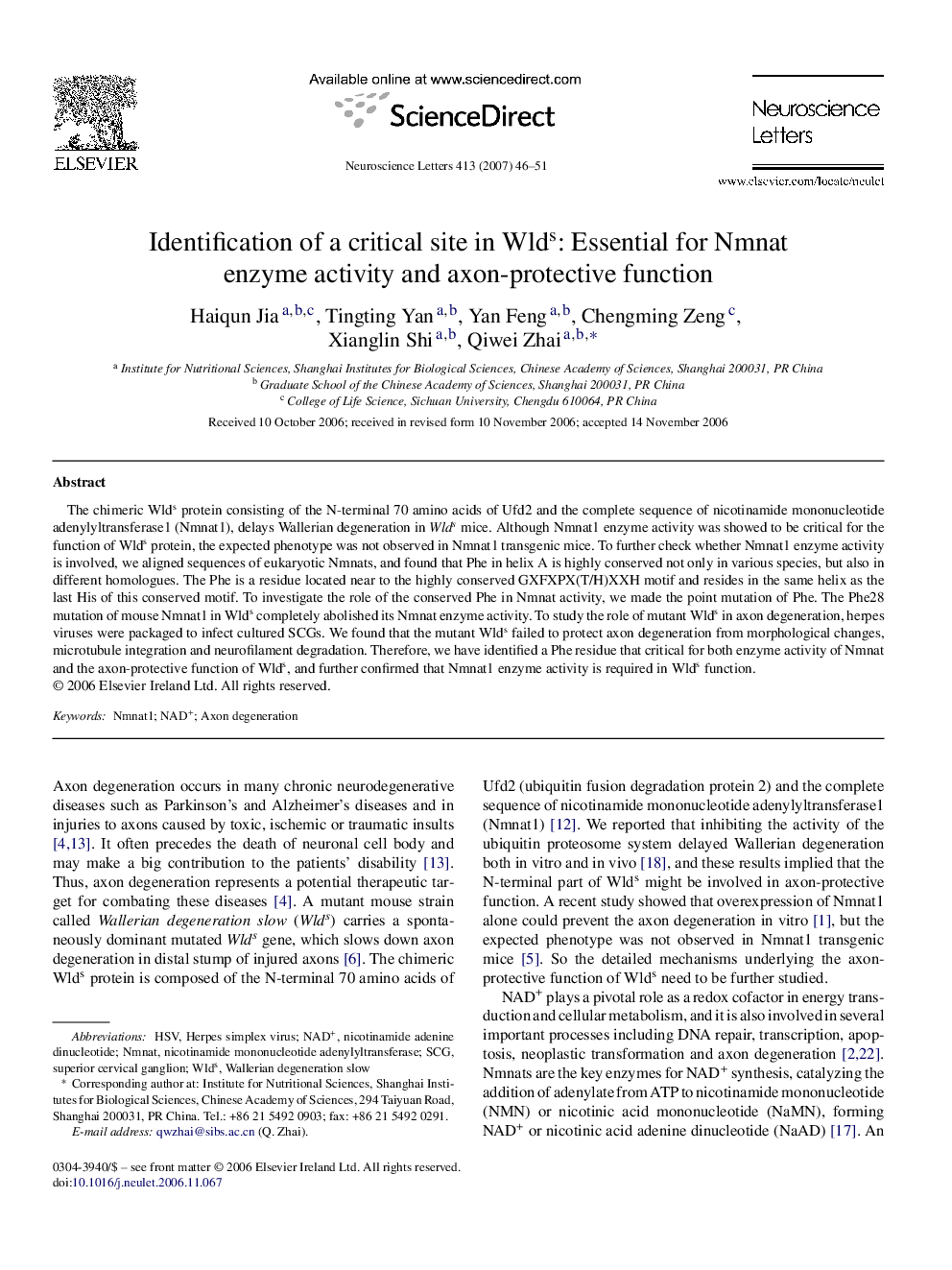| Article ID | Journal | Published Year | Pages | File Type |
|---|---|---|---|---|
| 4349550 | Neuroscience Letters | 2007 | 6 Pages |
The chimeric Wlds protein consisting of the N-terminal 70 amino acids of Ufd2 and the complete sequence of nicotinamide mononucleotide adenylyltransferase1 (Nmnat1), delays Wallerian degeneration in Wlds mice. Although Nmnat1 enzyme activity was showed to be critical for the function of Wlds protein, the expected phenotype was not observed in Nmnat1 transgenic mice. To further check whether Nmnat1 enzyme activity is involved, we aligned sequences of eukaryotic Nmnats, and found that Phe in helix A is highly conserved not only in various species, but also in different homologues. The Phe is a residue located near to the highly conserved GXFXPX(T/H)XXH motif and resides in the same helix as the last His of this conserved motif. To investigate the role of the conserved Phe in Nmnat activity, we made the point mutation of Phe. The Phe28 mutation of mouse Nmnat1 in Wlds completely abolished its Nmnat enzyme activity. To study the role of mutant Wlds in axon degeneration, herpes viruses were packaged to infect cultured SCGs. We found that the mutant Wlds failed to protect axon degeneration from morphological changes, microtubule integration and neurofilament degradation. Therefore, we have identified a Phe residue that critical for both enzyme activity of Nmnat and the axon-protective function of Wlds, and further confirmed that Nmnat1 enzyme activity is required in Wlds function.
